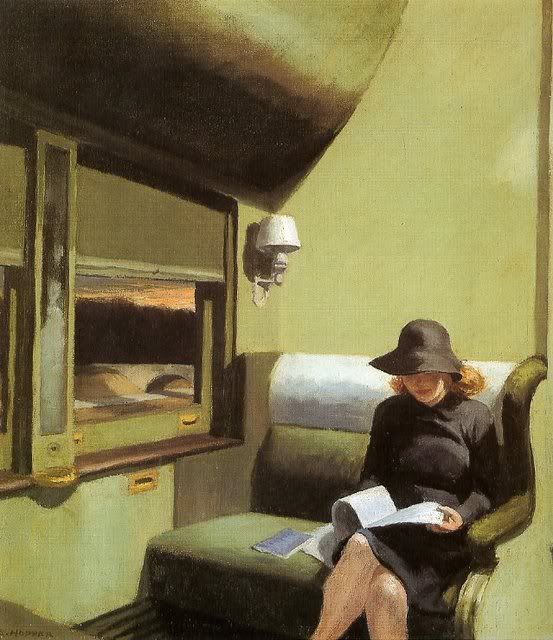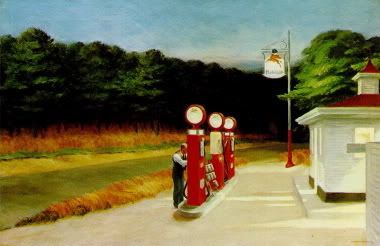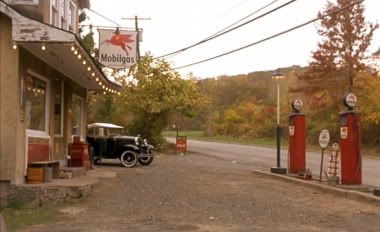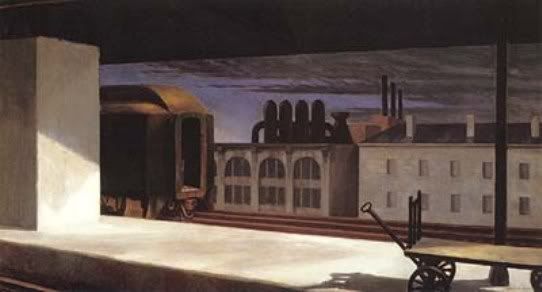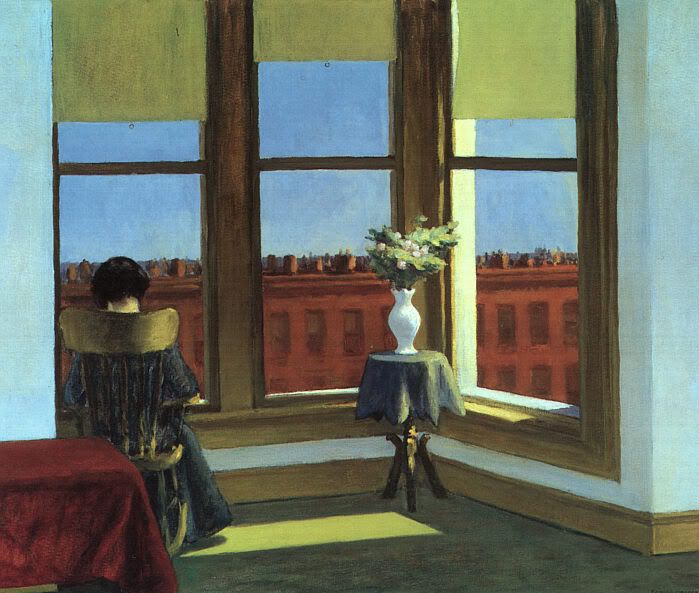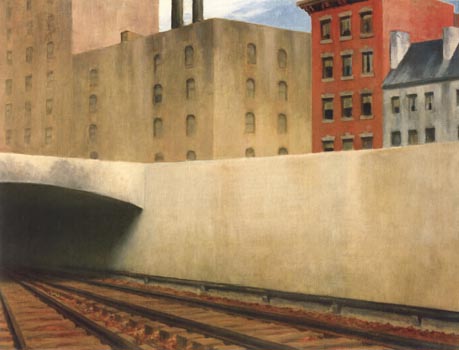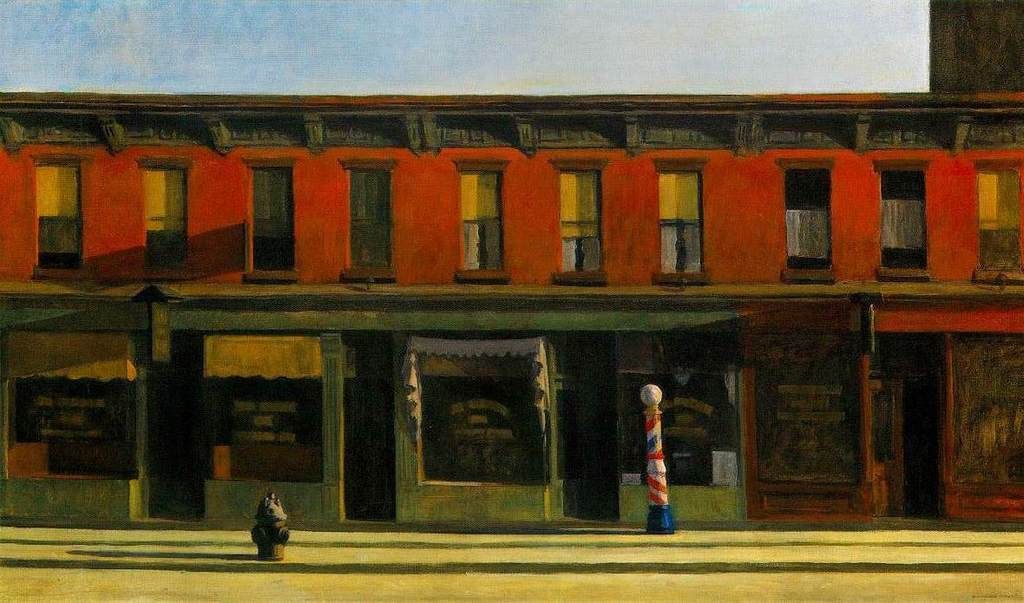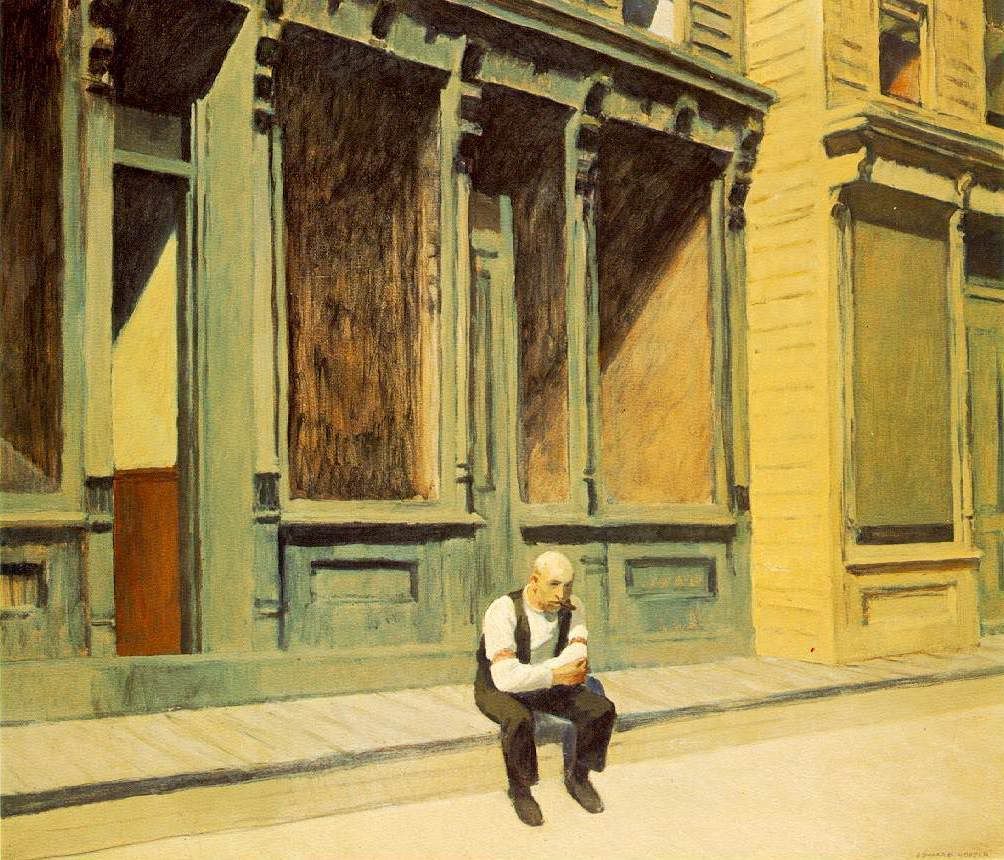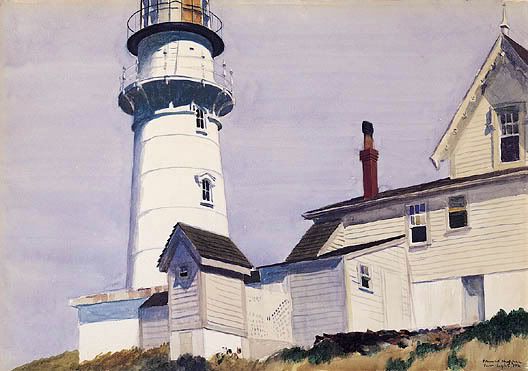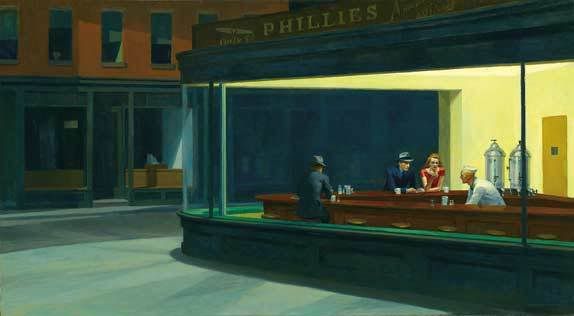
Edward Hopper, Nighthawks, 1942, Oil on canvas
The Mysterious Mr. Hopper
(Documentary from the BBC's Imagine series - 2004, Season 3, Episode 1)
___
adenda:
A yko informa-nos que está patente a exposição Western Motel. Edward Hopper and Contemporary Art no KUNSTHALLE wien, até 15 de Fevereiro.
«Hopper’s pictures “deal with America not only on the surface, but dig deep into the American dream, radically examining this profoundly American dilemma of appearances and reality,” says the German film maker Wim Wenders, who refers to the great American painter Edward Hopper (1882–1967) in his work like many other artists from Alfred Hitchcock and David Hockney to Paul Auster and Peter Handke. Hardly any twentieth-century artist has succeeded in combining existential artistic claims with an aesthetics that describes everyday life, the individual moment, and the iconography of a place in such a poetical and impressive manner. Regardless of the art fashions of his day, Hopper developed a metarealism transforming the subjective perception of reality into something universal, reflecting the isolation of modern urban man, and exploring new forms of visual narration. The representation and manipulation of space, time, light, and shadow are the essential ingredients guaranteeing Hopper’s unbroken topicality in art. His reduced, psychologically charged, and meticulously constructed spaces unfold a lasting tension between the real and the fictitious, specific moments and duration, intimacy and anonymity, nature and civilization.
From Ed Ruscha’s stereotype condensations of the American myth and Rachel Whiteread’s and David Claerbout’s investigations of space-time coordinates to the homelessness of present-day existence as mirrored in Philip-Lorca diCorcia’s and Tim Eitel’s work, Hopper’s oeuvre finds its echo in the exhibition’s contemporary positions. Hopper’s works continue to describe the state of today’s world, his cinematographic view providing the starting point for narrative inventions and imaginations in space and time.
Participating artists:
Edward Hopper and David Claerbout, Dawn Clements, Jonas Dahlberg, Thomas Demand, Gustav Deutsch, Philip-Lorca diCorcia, Tim Eitel, Jim Jarmusch, Rachel Khedoori, Mark Lewis, Ed Ruscha, Markus Schinwald/Oleg Soulimenko, Jeff Wall, Rachel Whiteread
Curator: Gerald Matt, Director Kunsthalle Wien
Academic advisors: Carter Foster (curator, Whitney Museum of American Art, New York), Angela Stief (curator, Kunsthalle Wien), Ilse Lafer (assistant curator, Kunsthalle Wien), Lucas Gehrmann (independent curator)»
in http://www.kunsthallewien.at/en/events/index.shtml?id=2568
___
